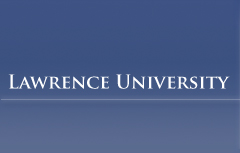Document Type
Honors Project
Publication Date
5-31-2017
Abstract
Whenever there is a faith that is claiming to be the “one true religion,” just what is it that defines that most sinister of opposition known as “heresy?” Is it the choices made by these aforementioned “heretics” to hold beliefs that are contrary to the mainstream? Or is the way in which “orthodox” authorities have historically asserted their own superiority while legally eliminating the competition? When overlooking monotheistic belief systems that claim universal theological authority, such as Christianity and Islam, what stands out the most is the fact that the greatest threat almost always comes not from exterior rivals, but from interior division. Consequently, it has always been the task of the “orthodoxy” to observe, counteract, and stamp out those dangerous views perceived as “heretical” lest they ever challenge the mainstream or misguide otherwise devout worshipers. To provide greater insight into the motivations and strategies for such counteractions this study shall analyze the means that orthodox authorities within Christianity and Islam have identified and reacted against “heretical” views within their respective religious traditions. Through analyzing various primary sources within both belief systems, be they canonical or “heretical,” I intend to make the argument that the “heresies” which early Christians and Muslims sought to oppose were no more set in stone than the “orthodoxy” that sought to uproot and categorize them. Quite the contrary, both categories are not only incredibly fluid in their nature, but have historically been shown to be in some degree of synchronization with one another.
Level of Honors
magna cum laude
Department
Religious Studies
Advisor
Martyn Smith
Recommended Citation
Barnard, Brett G., "Supplanting the Wrong with the Right: A Synoptic Overview of Christian and Islamic Reactions Towards the Subject of Heresy" (2017). Lawrence University Honors Projects. 107.
https://lux.lawrence.edu/luhp/107
Included in
Biblical Studies Commons, Catholic Studies Commons, Christian Denominations and Sects Commons, Christianity Commons, History of Christianity Commons, History of Religion Commons, History of Religions of Western Origin Commons, Islamic Studies Commons, Islamic World and Near East History Commons
